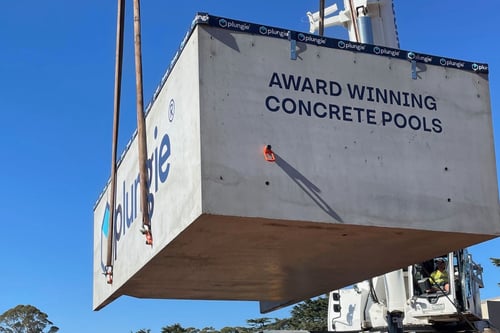With over 640,000 Australian households experiencing housing stress, it’s safe to say that we’re in the midst of an affordable housing crisis. Prefab construction has been proposed as a solution to this issue. We know that prefab has many benefits — from halving project timeframes to reducing hazard exposure on-site by up to 20% — but can it solve Australia’s housing crisis? Let’s take a closer look at the current housing market to see if prefab construction could offer a viable solution.
Australia’s Affordable Housing Crisis
So, how did our housing market get here? Unsurprisingly, COVID-19 had a lot to do with it. During the pandemic, household sizes decreased from approximately 2.6 residents to 2.55 residents, partly due to family and relationship breakdowns. The increase in working-from-home arrangements also saw many additional bedrooms repurposed as home offices, rather than being lived in by a housemate.
Although this may not seem like a drastic decrease, the Reserve Bank of Australia estimates that every percentage point decrease in average household size results in 120,000 new households. The National Housing Finance and Investment Corporation predicts that there will be a housing shortfall of 163,400 dwellings between 2025–2032.
According to the Parliament of Australia, this supply problem is the culmination of many long-term factors, including:
- Planning and approvals processes at a state and local level
- A lack of coordination between infrastructure planning and the supply of housing
- Shortage of skilled labour in the construction industry
So, what types of housing are needed to combat this shortfall and address the housing crisis?
Low-Income Housing
Australia’s housing problems are well past the point of young people not being able to afford their first home. A survey conducted by Anglicare found that Australians earning a minimum wage could afford just 2% of rental listings on the market. What’s more, Australians on the age pension and disability pension would be able to afford 0.7% and 0.1% of rental listings, respectively. This is consistent with reports that low-income earners are increasingly falling under the 30:40 affordability indicator, where people in the bottom 40% of incomes spend more than 30% of their income on housing.
Medium-Density Housing
It’s not surprising that Australian homes are larger than the global average — that’s part of the Aussie dream after all. As people living in larger homes age and look to downsize, however, they are not able to find affordable housing in the community they have called home for decades. According to Domain, medium-density housing would help provide a middle ground for those who are not experiencing housing stress but are not able to afford to buy a single dwelling.
Regional Housing
Regional communities are also impacted by a housing shortage, with social housing waitlists continuing to grow. This problem is compounded by the fact that it is difficult for construction workers to travel to regional and rural communities to build affordable homes. As well as addressing the social housing shortage, new homes could help attract government employees to live and work in these areas.
How Can Prefab Help?
The QBuild Rapid Accommodation and Apprenticeship Centre in Brisbane is a step towards using the efficiencies of prefab construction to provide affordable housing. This facility manufactures prefabricated components including bathroom pods and flat-pack kitchens that will be transported to building sites across regional Queensland. By the end of 2023, the centre aims to deliver 93 prefabricated builds. Centralising production in this way will help overcome the construction labour shortage facing regional communities.
As well as addressing the regional housing shortage, the speed of prefab construction could help fill the housing supply gap in capital cities across the country. We know that prefab methods can take weeks off pool installation, but they can also cut construction project timeframes in half. This would take some pressure off an already short-handed construction industry and help them build medium-density housing, faster. After all, time is of the essence when a large percentage of your weekly income is going towards rent. The economies of scale achieved through using standardised components can also make building more affordable for homeowners and developers alike.
Although prefab construction could go a long way to increasing the supply of housing across Australia, it will ultimately be up to policymakers to invest in affordable housing first so these efficiencies can be leveraged.



.jpg?width=325&height=163&length=500&name=House%202%20Han%20and%20Can%20-%20project%20gallery%20(4).jpg)